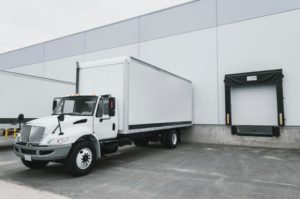It has been another tough year for consumer packaged goods (CPG) shippers. In 2015, CPG shippers were hurt by the same trends that affected the industry last year, despite increased efforts to cut logistics costs and improve service. Data collected from 2014 sheds light on what affected CPG shippers in 2015. Here are 5 trends that continue to affect consumer packaged goods shippers:
CPG transportation is the most important aspect of logistics
In a recent study, 83% of supply chain leaders said transportation is their greatest concern. This is a drastic change from an identical study done two years ago, where transportation was never mentioned as a top priority. The main obstacles in transportation are rising line haul rates and the difficulty of securing capacity. These obstacles are driven, among many factors, by the increasing driver shortage and infrastructure-related problems. The bad news for consumer packaged goods shippers is that these are systemic problems with no resolutions in sight and they will continue to drive up linehaul rates and worsen the driver shortage.
CPG transportation networks require a redesign
Network redesign is the second highest concern of supply chain leaders in 2015, with 72% saying it was one of their top priorities. With the rising costs of transportation, the need for more carrier-friendly routes, and the emergence of new and fast-growing channels, CPG shippers realize that networks cannot be static in today’s supply chain environment.
To achieve strategic objectives, networks must be frequently analyzed and adjusted to provide consistent service levels and keep up with fluctuating demand. A network redesign can be difficult, requiring long-term thinking about company goals and the market outlook, but it is a necessary step to take for CPG shippers.
CPG inventory size is growing despite lean efforts
Approximately 70% of ambient CPG shippers experienced an increase in inventory in 2015, despite improvements in demand and transportation forecasting. There are a few straightforward reasons for inventory increases: inventory is backed up due to road congestion and last-mile delivery obstacles, shippers have accumulated safety stock while redesigning transportation networks, and limited capacity has left some inventory unable to be moved. Only 60% of temperature-controlled CPG shippers experienced inventory increases because temperature-controlled shippers often have long-term, mutually beneficial relationships with carriers, which highlights the need for better partnerships.
CPG freight costs continue to rise
Median freight costs have risen by 14% for temperature-controlled shipping. CPG shippers have historically enjoyed competitive pricing, but tightening capacity is increasing rates. CPG shippers usually ship transactional freight for convenience, but now, capacity is scarce and costs are high, CPG shippers are trying to move to long-term relationships with 3PLs and carriers to lock in reasonable freight rates. Looking ahead, 83% of supply chain leaders in the CPG industry expect transportation costs to continue to increase. Increasing rates mean now is the time for CPG shippers to find long-term solutions.
CPG service levels are declining
CPG shipping service levels have slowly declined over the past few years. The main reasons for declining service are transportation related: the driver shortage and tight capacity, congestion along routes and at delivery points that create significant shipping delays. Amazingly, 96% of CPG shippers did not meet their requested arrival date (RAD) goals for the year, with only about 85% of shipments arriving on time industry-wide. Consistency in freight transportation is difficult for CPG shippers fighting for transactional freight while operating insufficient transportation networks. These statistics highlight the serious shortage of capacity and infrastructure problems that the industry faces.
Transportation is the biggest obstacle for CPG shippers and moving goods will only get more expensive and more complex. Industry leaders choose to outsource to a 3PL to save time and money while gaining expertise from a long-term solutions partner. 3PLs provide custom, technology-enabled transportation solutions that CPG shippers need to navigate today’s logistics environment.
Want to learn about CPG shipping solutions? Read more here.


